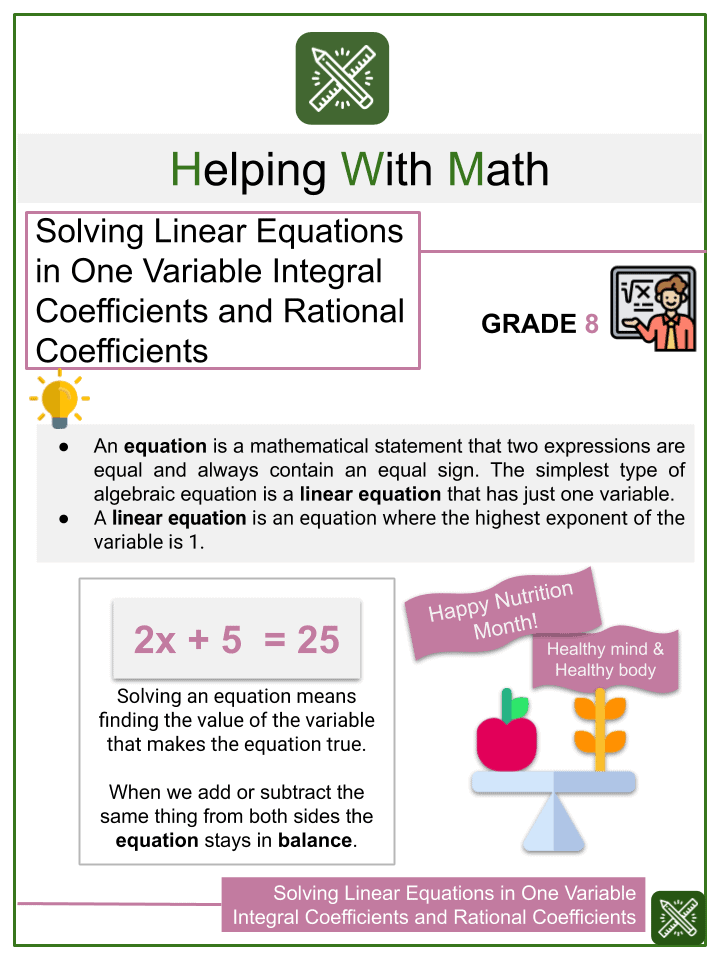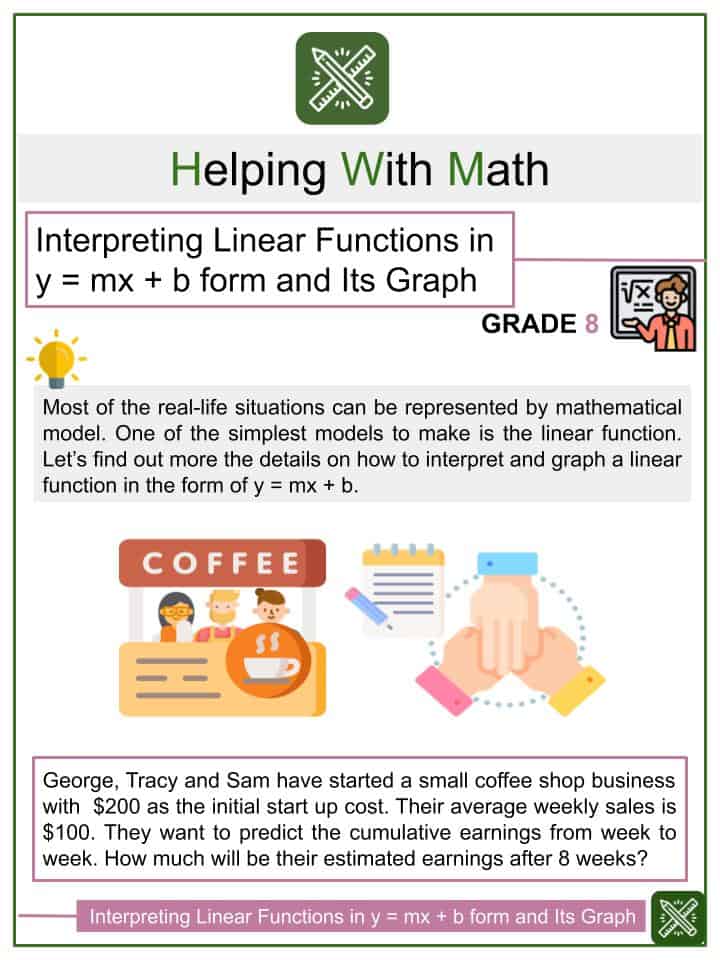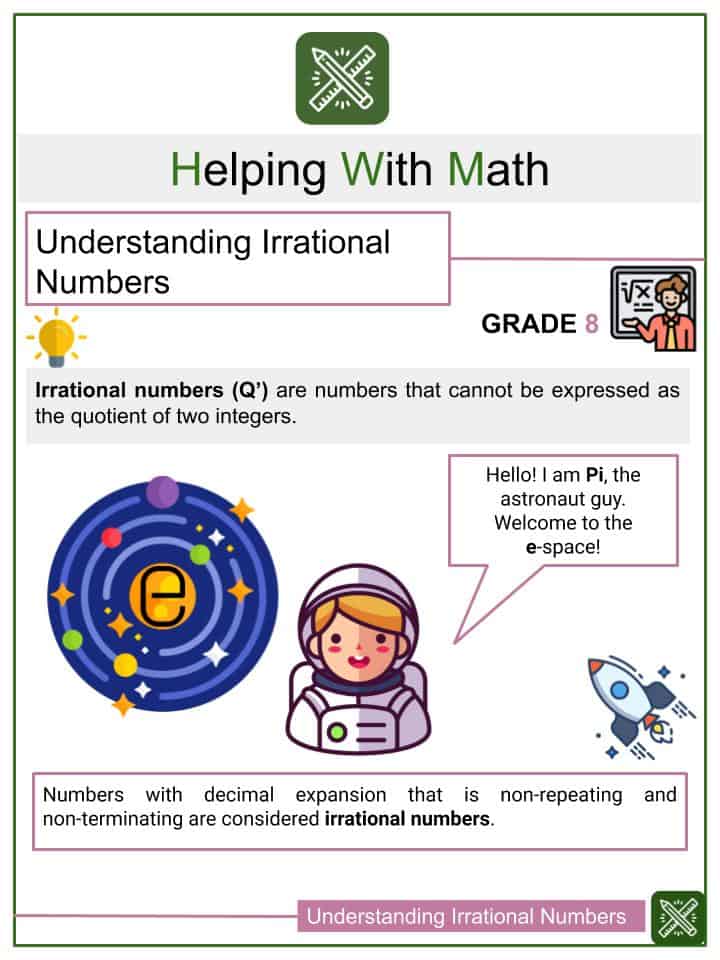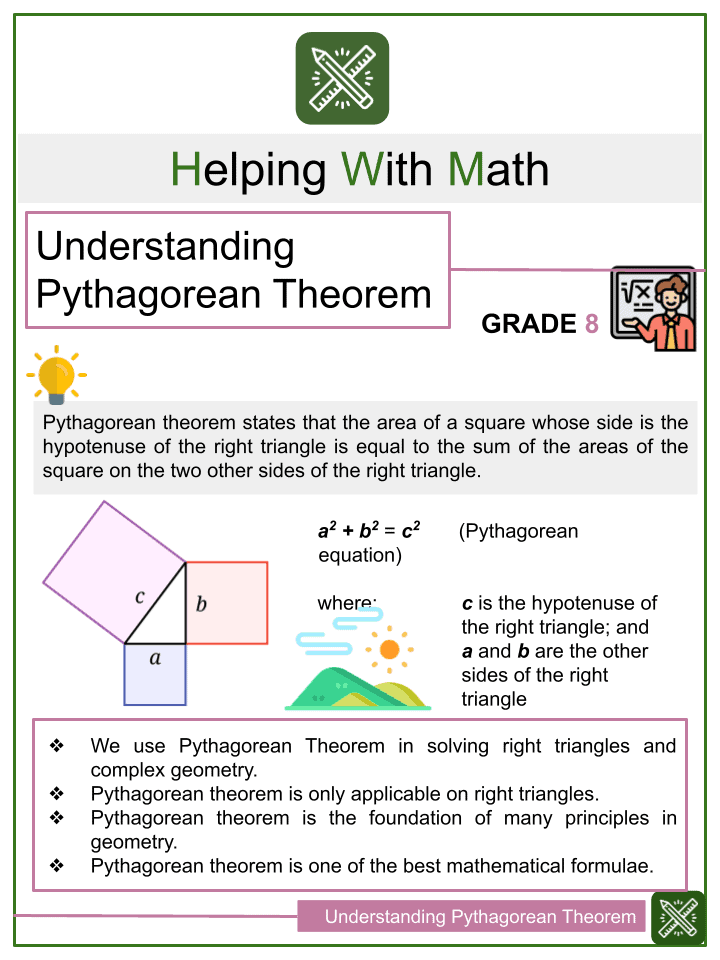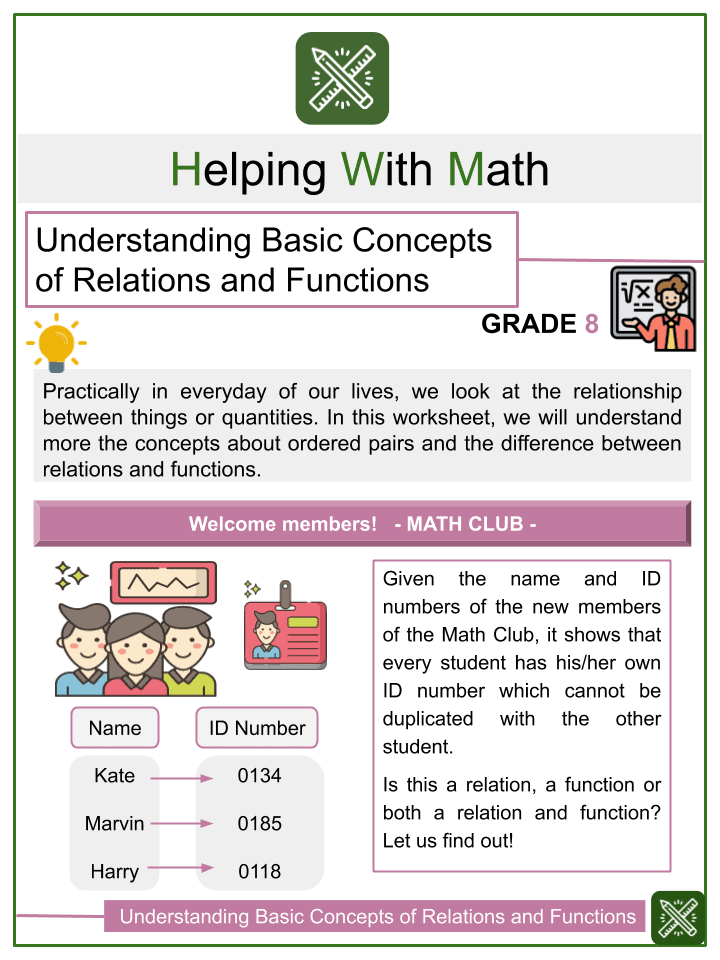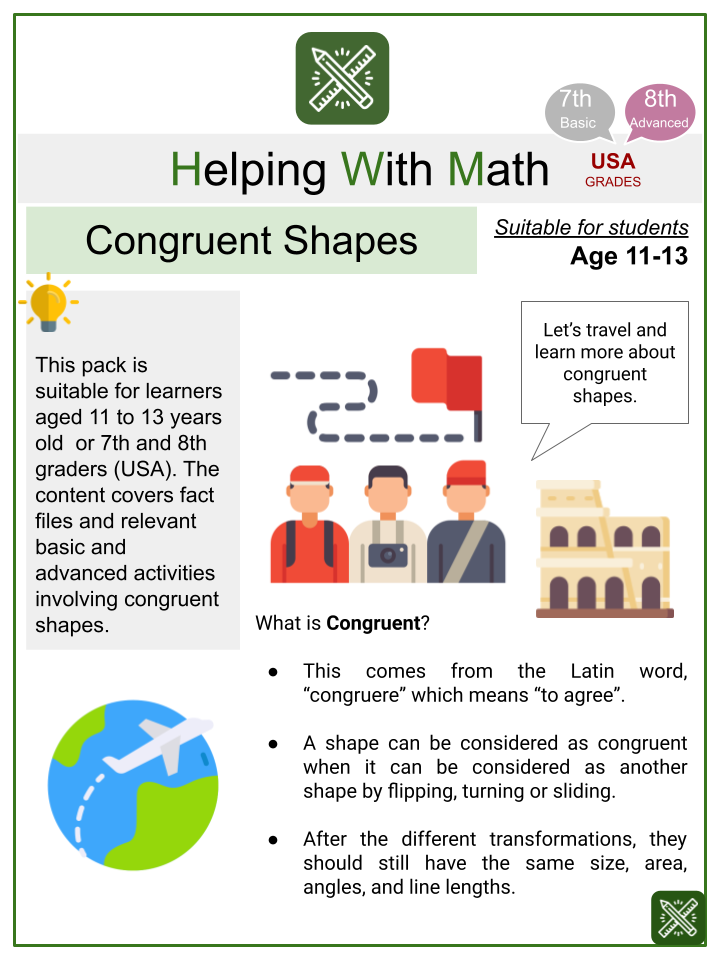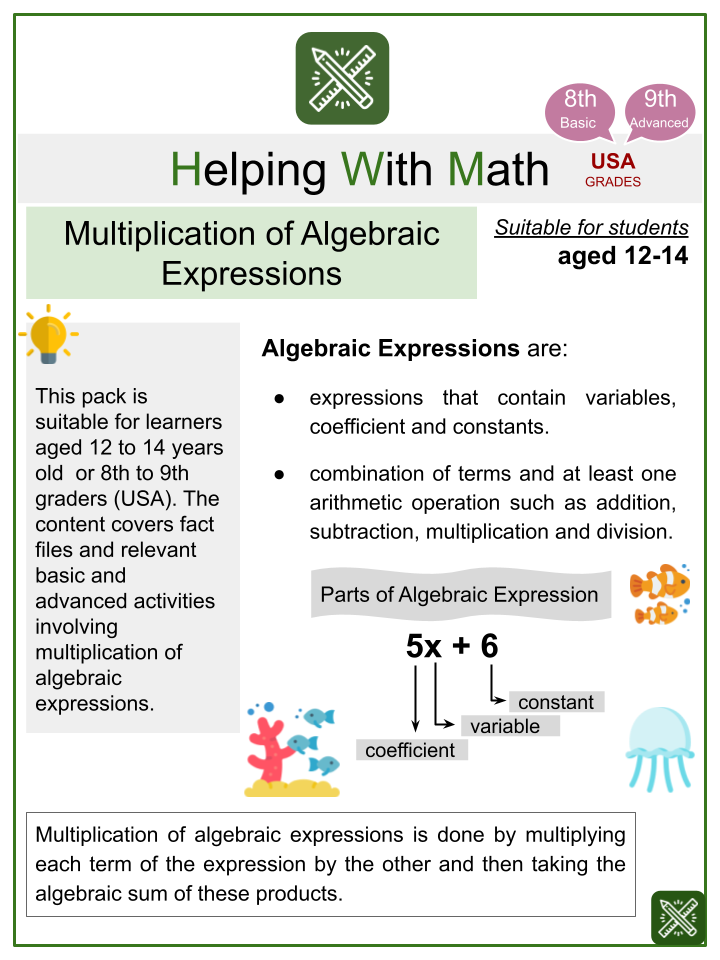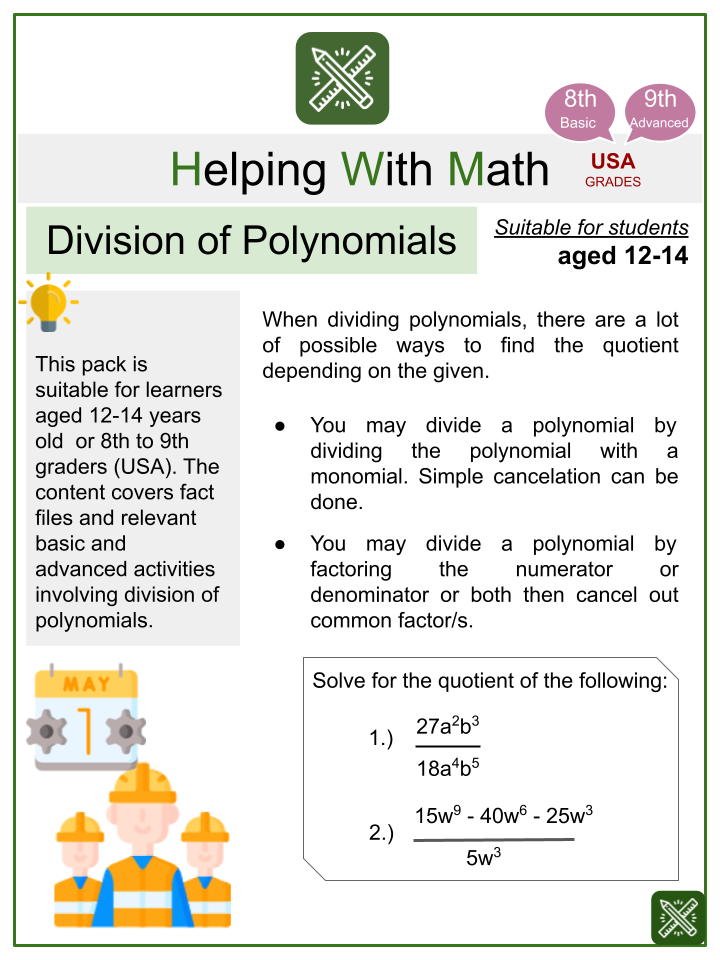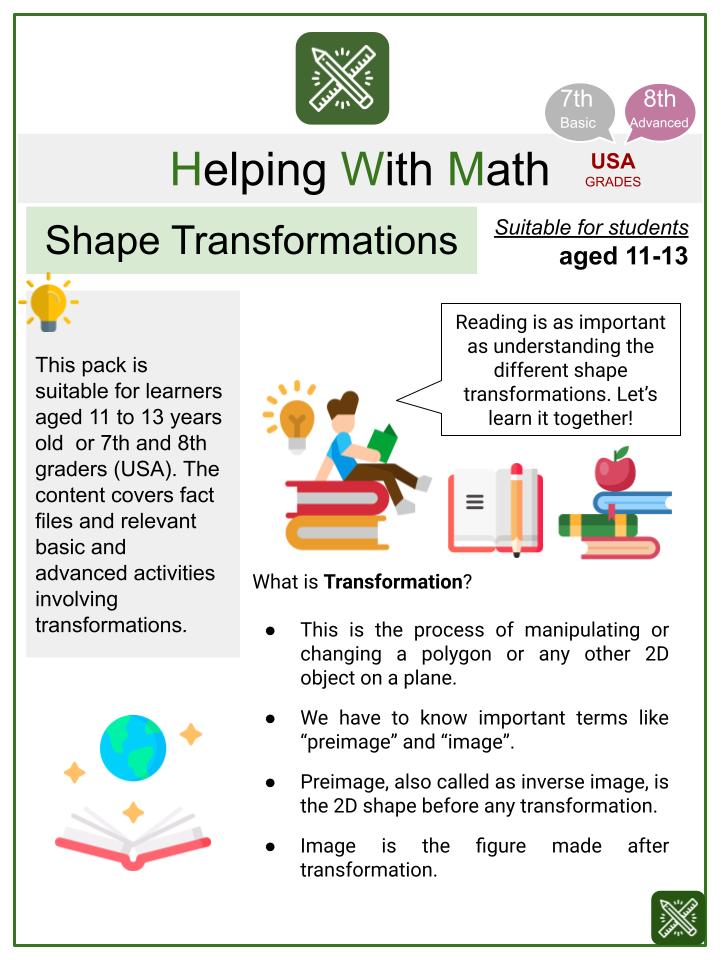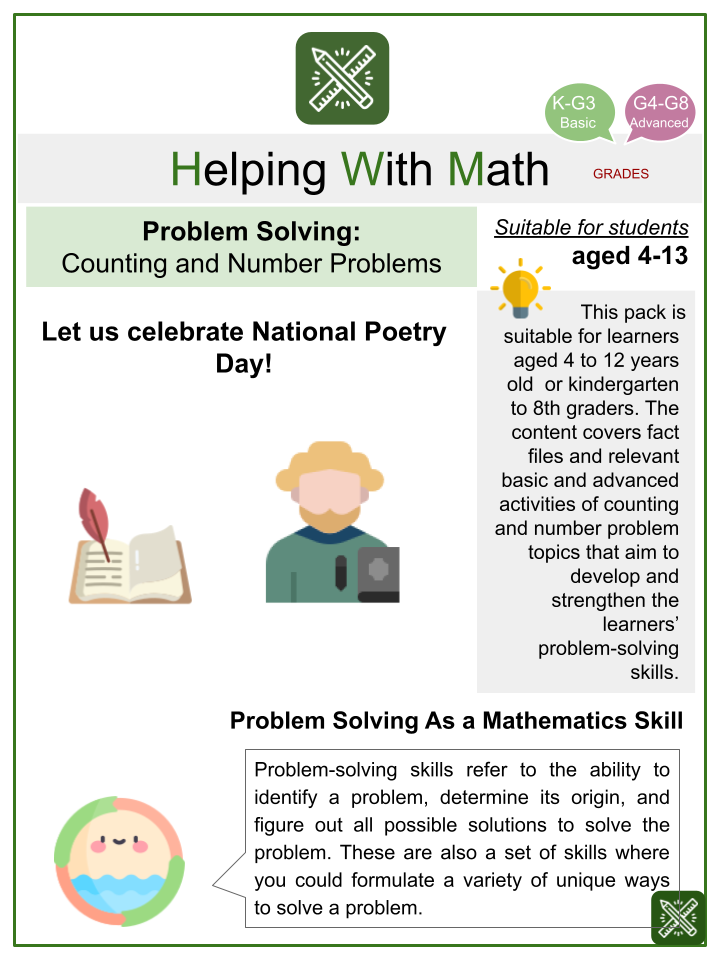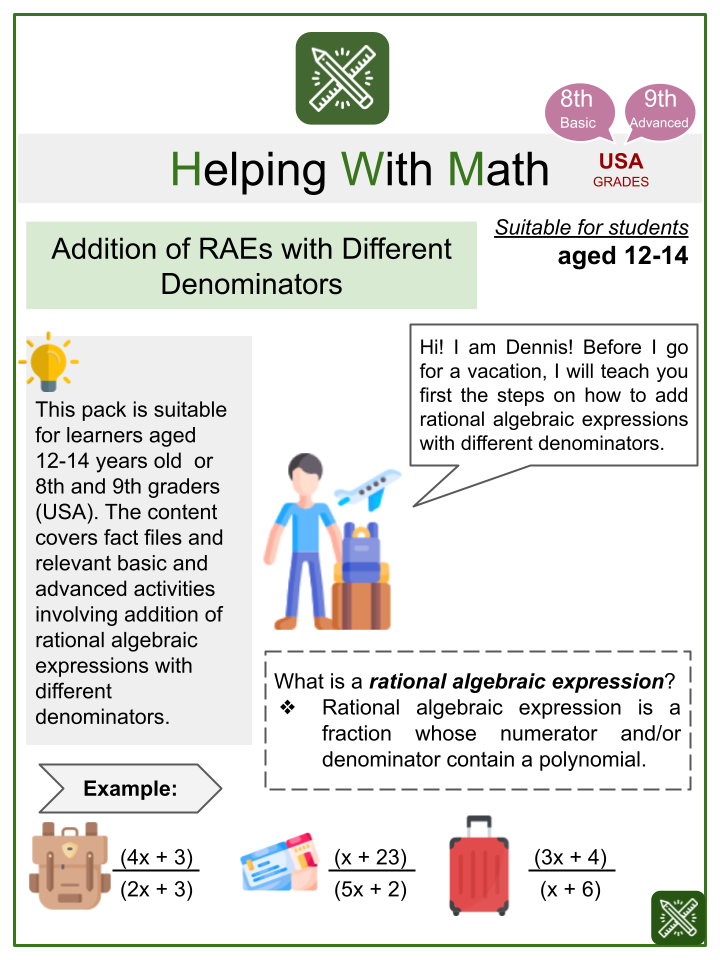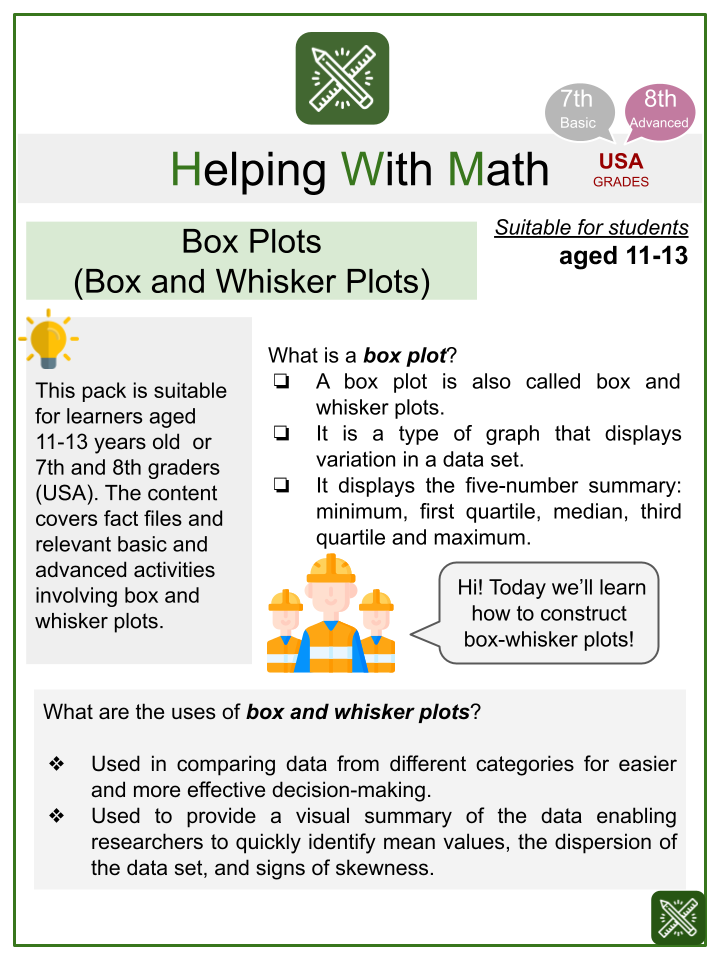8th Grade Math Worksheets
In this section, you can view all of our eighth-grade math worksheets and resources. These include common-core aligned, themed and age-specific worksheets. Perfect to use in the classroom or homeschooling environment.
We add dozens of new worksheets and materials for math teachers and homeschool parents every month. Below are the latest grade 8 worksheets added to the site.
8th Grade Common Core Aligned Learning Objectives & Standards:
Learning objectives:
In Grade 8, instructional time should focus on three critical areas: (1) deriving and reasoning about expressions and equations, including modeling an association in bivariate data with a linear equation, and solving linear equations and systems of linear equations;
(2) understanding the concept of a function and using functions to describe quantitative relationships;
(3) analyzing two- and three-dimensional space and figures using distance, angle, similarity, and congruence, and understanding and applying the Pythagorean Theorem.
a. Conceptual skills
- 8th graders utilize linear equations and systems of linear equations to represent, analyze, and solve a variety of problems. They acknowledge equations as a scaffolding concept for proportions (y/x = m or y = mx) as special linear equations (y = mx + b), and understand the meaning of each variable.
- Learners display a firm understanding of linear equations by using it to create a quantifiable relationship between two quantities in bivariate data (such as arm span vs. height for students in a classroom).
- Interpreting the trend of the linear model in the context of the data so that learners can express it as a relationship between the two quantities in question and predict the trends of the components of the relationship (such as slope and y-intercept) in terms of the situation.
- They acquire the concept of a function as a rule that assigns to each input exactly one output and a relationship where one quantity determines another.
- Learners extend their ideas of distance and angles, how they behave under translations, rotations, reflections, and dilations. As well as the ideas about congruence and similarity to describe and analyze two-dimensional figures and to solve problems.
- They get familiarized with the basic concepts of the Pythagorean Theorem and its converse, and can discuss why the Pythagorean Theorem holds, for example, by decomposing a square in two different ways.
b. Procedural skills
- Learners carefully select and efficiently carry out ways to solve linear equations in one variable. Also, make use of different equality properties to create the concept of logical equivalence and conserve the solutions of the original equation.
- They solve systems of two linear equations in two variables and connect the systems to pairs of lines in the plane. At the same time they describe the nature of the solution and the graph created.
- They can translate among representations and partial representations of functions (noting that tabular and graphical representations may be partial representations), and they describe how aspects of the function are reflected in the different representations.
- Learners illustrate that the sum of the angles in a triangle is the angle formed by a straight line, and that various configurations of lines give rise to similar triangles because of the angles created when a transversal cuts parallel lines.
- They apply the Pythagorean Theorem to find distances between points on the coordinate plane, to find lengths, and to analyze polygons.
- They complete their geometry learned concepts by working on volume to solve problems involving cones, cylinders, and spheres.
c. Life skills
- Learners deal with more applications of mathematics in their lives with grasped concepts and procedures from learning linear equations, functions, and Pythagorean Theorem.
- Linear equations and its graph can solve linear relationships of two variables such as the connection of demand and supply of goods in respect to its price value, the weight-height interconnection, amount of gasoline and number of miles reached, etc.
- Functions, likewise, are used to illustrate input-output relationships. It can explain trends of values — whether increasing and decreasing; predict future values — population of a certain town, number of bacteria in a petri dish for a period of time.
- By learning Pythagorean Theorem, 8th graders can estimate and calculate distance of two points or locations. They will learn that the shortest distance to reach another point is by walking, running, or driving in a diagonal direction.

